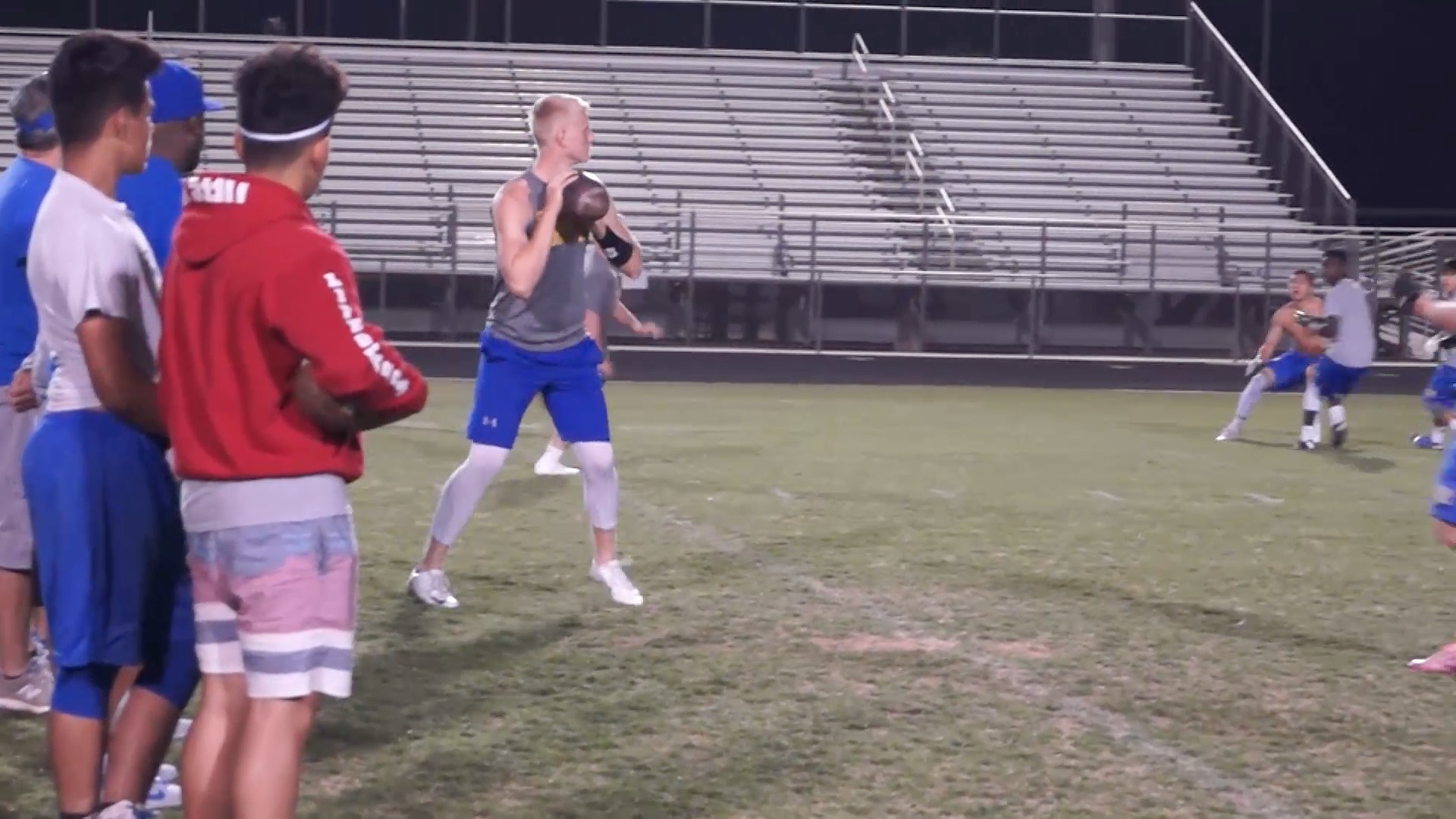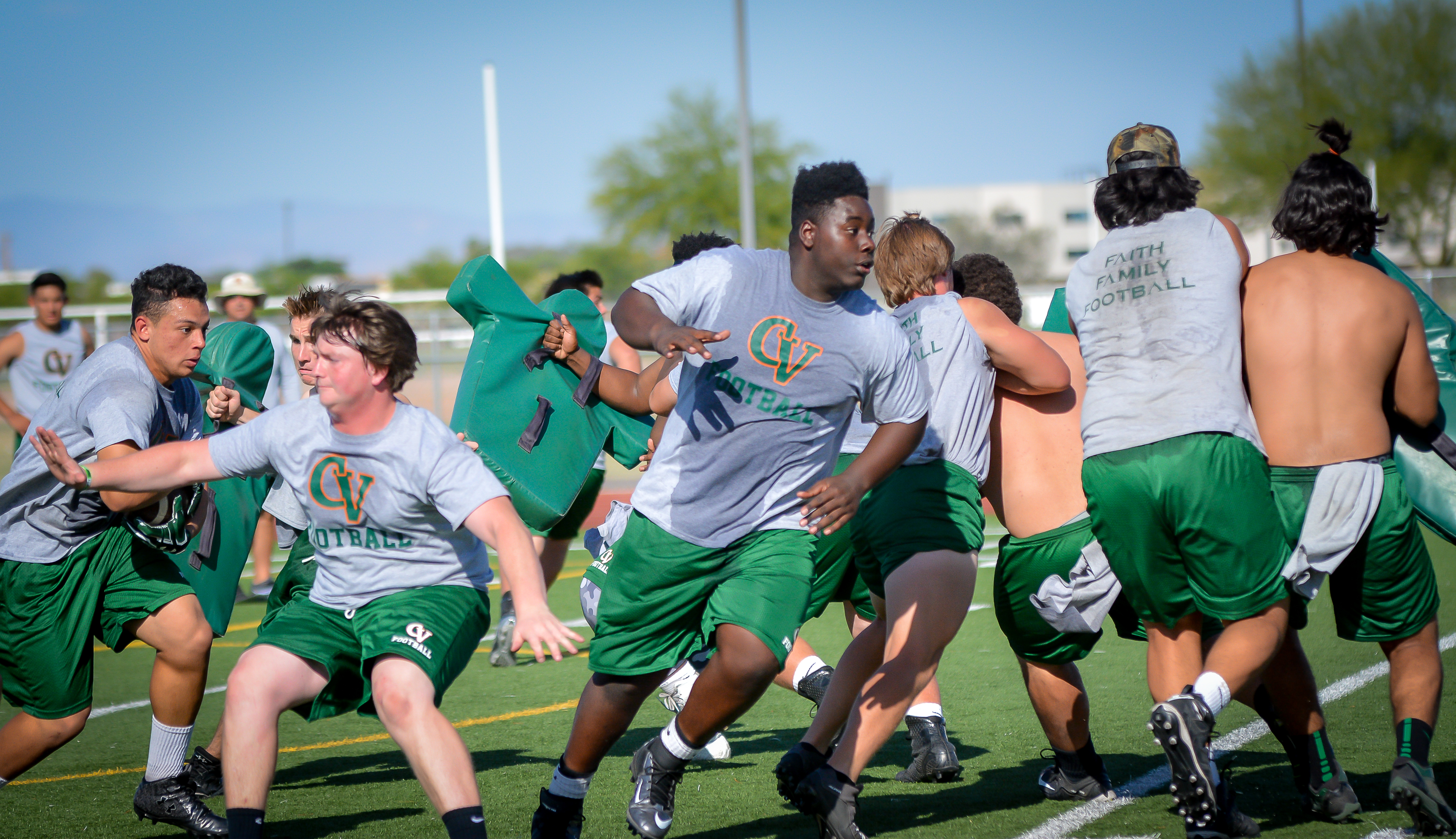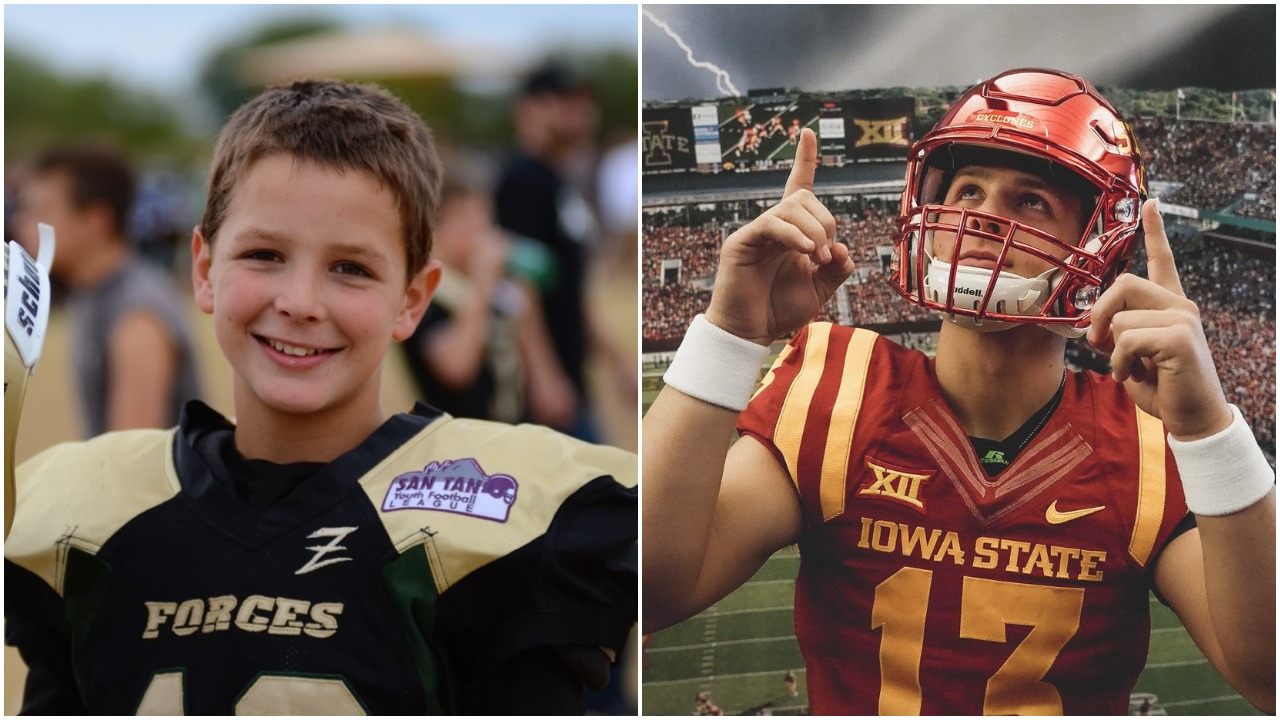Girls flag football has been around in the Arizona high school ranks for years. Schools like Desert Ridge, Hamilton and Mesquite have gotten together to play a game or two a school year and give some of their female student-athletes a chance to play on the gridiron.
It’s also a growing trend across the country.
According to FloridaHSFootball.com, over 250 high schools participated in girls flag football in Florida in 2016, and the state has seen steady growth over the years. Nevada started a pilot program in 2012 and now has over 800 participants (36 schools). Even in the state of Arizona, PrimeTime Athletics has been organizing girls flag football in the youth ranks.
The Grand Canyon State could be primed as one of the next states to see it grow at the high school level.
Now, it’s not powderpuff football, which is largely played within one high school where classes play each other.According to Hamilton girls flag football coach Matt Stone, there are a few other distinct differences.
“The biggest difference is you have kids running it. They have kid referees, kid coaches,” Stone said. “Girls flag football is a sanctioned sport with a rulebook, adult referees, adult coaches. It’s the same as soccer, softball or any other sport that’s played on campus. Girls flag football is a sport, powderpuff is a game.”
Hamilton held it’s first game in two years this past May. Senior Lyric Pote was able to revisit the sport she fell in love with as a freshman when she returned as a senior.
“I’ve waited three years to do this again,” Pote said. “I’ve tried all throughout high school to have it happen again, so I’m really happy I get to leave high school and end my senior year with this.”
Stone was first introduced to the sport in 2006 when he and few other teachers at Desert Ridge High School helped organize a Powderpuff game and felt the sport could expand.
“(The students) were demanding more,” Stone said. “Literally from the first year, they asked, ‘How can we play another school? How could we play Highland or Skyline?’ It took us six years to get there. In 2012, the booster club helped us organize the first game with Mesquite and it just kind of took off from there.”
He said in year one, they had about 40 students participating. Fast forward four years, and Stone said they had 95-100 players on one campus consistently.
“When we would play another school, whether it was against Mesquite or when I made the jump to Hamilton, we were cutting about 60-70% from the roster to make one All-Star team, which is always tough, but we took pride that we had enough girls that we could do that, which was speaking volumes of the growth of the sport.”

Desert Ridge has had a consistent program with many multi-year players.
“I remember I was so shy and scared of all the bigger people,” Desert Ridge senior Rylie Pierce said. “Of course it was freshmen and seniors….they were always looking up to them because they played for four years, and I just wanted to be like them.”
Casteel participated for the first time this year against Hamilton.
“It was something special, I have to tell you,” Rachel O’Brien, who helped organize the event for Casteel, said. “They truly had so much fun. There were tons of parents and other students showed up to support. It was a friendly game, everything was more than I expected.”
The Casteel faculty had a similar experience to Stone’s where there was a small buzz around campus that led to unexpected participation numbers.
“It started out smaller and a couple people talking about it,” Casteel athletic director Ryan Ridenour said. “Next thing you know, it got pretty big. The girls had quite a big group as it kind of grew and people heard about it. I think it obviously is appealing if it was an AIA sport.”
Coach Stone is hoping to do just that.
What Would It Take To Become An AIA-Sanctioned Sport?
With Casteel participating in their first year as a program, Stone is hopeful the Chandler Unified School District can add teams to Chandler, Perry and Basha to then make their proposal to the AIA as an emerging sport.
“A school district must come to them and request the sport,” Stone said. “So for us, at least in Chandler, if we can get all five of our schools playing like we did with Casteel at a club level and the district as a whole have five schools who want in,” Stone said.
“We can then go to the AIA, and they would approve it, because they approved sand volleyball with five schools six years ago, so we could start with the same amount and I think it would work just fine.”
It may not be that simple, according to AIA executive director David Hines, but girls flag football can begin its quest to an AIA sport.
“Basically a group, a school, a region, a conference will make a recommendation that they would like to pursue the fact that we would have an emerging sport,” Hines said.
If it were to become an emerging sport, interest would be gauged around the schools and a schedule would be created. Should participation continue to grow, the emerging sport could become a full-fledged AIA-sanctioned sport.

“The process is basically once we get to 50% of your conference that has teams, then the board can say it’s now a sanction recognized sport.”
Other factors that could help the sport is participation outside of the high school ranks. Hines said about “200 or 300 girls” within the state are a part of USA wrestling, so girls wrestling was named an emerging sport this May. Sand volleyball just wrapped up its first AIA season, and it began with just five teams when it was given emerging sport status.
“It was a request because we had lots of numbers of kids throughout the state playing USA beach volleyball and felt like there was interest to participate in that sport,” Hines said. “We started with that and over the five years we got to 60+ teams and now it has become a state sport.”
The AIA will not only look at outside participation within the state, but outside the state borders as well when looking at potential growth. Girls flag football in states like Florida, Nevada and Alaska has continued to blossom, and that can help Arizona’s cause.
“If it’s a national trend and our membership would like to support that, then I think that’s a positive that the board would look at,” Hines said.
What’s Next
For now, schools like Hamilton, Desert Ridge and Casteel will continue to try to add members to their own teams and encourage other campuses to take part under club status, meaning a faculty member must sponsor it with no additional pay and many of the organizational duties that are usually handled by the administration must be taken care of by volunteers.
“It’s hard but the girls who have tasted it will demand it and that’s what keeps us going each year,” Stone said.
Maybe that demand will spark the state’s next AIA-sanctioned sport.


